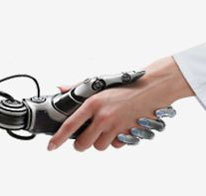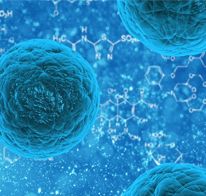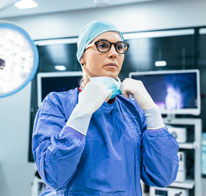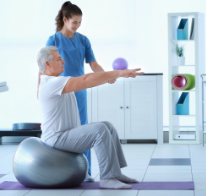There are two primary ligament systems in the spine, the intrasegmental and intersegmental systems:
1. The Intrasegmental System holds individual vertebrae together and includes the ligamentum flavum, interspinous, and the intertransverse ligaments.
2. The Intersegmental System holds a group of vertebrae together. The intersegmental system includes the anterior and posterior longitudinal ligaments and the supraspinous ligaments.
Ligament Injuries

Ligament Injuries
Ligaments connect bone to bone, bone to cartilage, bone to tendons, and attach muscle to bone. Ligaments and tendons are fibrous tissues made up of collagen fibers. Ligaments provide stability of the spine during movement and rest. Excessive movements such as hyperextension or flexion are limited by ligaments and can prevent certain movements. Trauma can lead to injury of the ligaments and tendons and healing is slow due to their limited blood supply.
Ligaments protect the bones and nerves of the spinal cord. The cervical spine ligaments in the neck are especially prone to injury because the neck is the only exposed portion of the entire spinal column. Ligaments help to provide structural stability.
Ligaments protect the bones and nerves of the spinal cord. The cervical spine ligaments in the neck are especially prone to injury because the neck is the only exposed portion of the entire spinal column. Ligaments help to provide structural stability.
Two Primary Ligament Systems
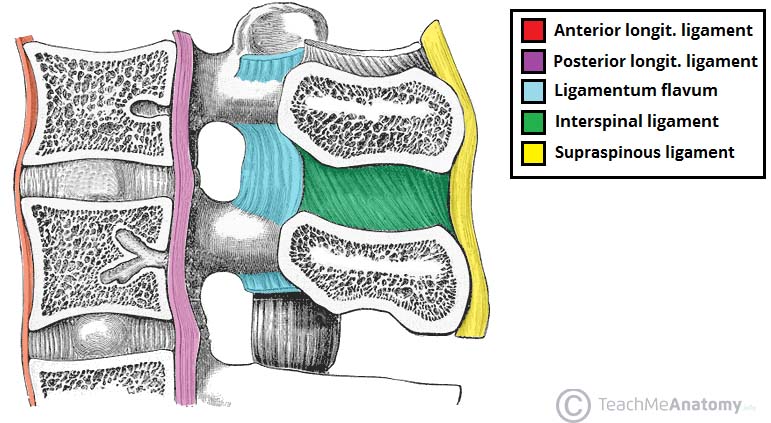
Helpful diagram of ligaments in the Lumbar Spine which can be injured.
Three Most Important Ligaments
The three most important ligaments in the spine are the Ligamentum Flavum, Anterior Longitudinal Ligament, and the Posterior Longitudinal Ligament:
1. The Ligamentum Flavum covers the dura mater which is the layer of tissue that protects the spinal cord. This ligament connects the facet joints to create a small covering over the posterior openings between the vertebrae.
2. The Anterior Longitudinal Ligament connects the front of each vertebra to each other. This ligament runs up and down the spine.
3. The Posterior Longitudinal Ligament extends up and down behind the spine and inside the spinal canal.
1. The Ligamentum Flavum covers the dura mater which is the layer of tissue that protects the spinal cord. This ligament connects the facet joints to create a small covering over the posterior openings between the vertebrae.
2. The Anterior Longitudinal Ligament connects the front of each vertebra to each other. This ligament runs up and down the spine.
3. The Posterior Longitudinal Ligament extends up and down behind the spine and inside the spinal canal.
What Causes Ligament Injuries?
Car or sports accidents along with falls are the leading cause of injuries or trauma to the ligaments of the spine. A ligament can overstretch, become twisted, tear, or break as a result of trauma. The muscles surrounding the ligaments compensate for the injury which results in painful muscle spasms. This is a protective mechanism to prevent further damage or stretching of the ligaments. The degree of injury determines the outcome. Sometimes there is complete healing and in other cases, chronic pain of variable severity results.
Types of jobs that are the worst for back and ligament strain include office workers, nurses, manual laborers, construction and factory workers, dentists, drivers, and auto mechanics.
Another source of ligament damage is poor posture. Slumping over while standing for long periods of time is the result of muscle fatigue. Slumping over places the entire weight of the body on certain regions of the spine which affects the pressure on the ligaments. The ligaments overstretch and become weakened. Muscles compensate causing gait and posture to become more abnormal. Standing becomes even more difficult and painful.
Workplace hazards such as lifting items repeatedly or lifting heavy objects incorrectly as well as computer work with poor posture all contribute to muscle and ligament damage which over time may become permanent.
Types of jobs that are the worst for back and ligament strain include office workers, nurses, manual laborers, construction and factory workers, dentists, drivers, and auto mechanics.
Another source of ligament damage is poor posture. Slumping over while standing for long periods of time is the result of muscle fatigue. Slumping over places the entire weight of the body on certain regions of the spine which affects the pressure on the ligaments. The ligaments overstretch and become weakened. Muscles compensate causing gait and posture to become more abnormal. Standing becomes even more difficult and painful.
Workplace hazards such as lifting items repeatedly or lifting heavy objects incorrectly as well as computer work with poor posture all contribute to muscle and ligament damage which over time may become permanent.
How are Ligament Injuries Diagnosed?
Many ligaments are seen at the craniocervical junction. Only three are the major stabilizers. These are the tectorial membrane, the transverse ligament, and the alar ligaments.
Instability of the spine occurs after trauma when the spinal ligaments lose their ability stay normally aligned between vertebral segments while they are under a normal weight-bearing load. This instability can lead to more injury, pain, or deformity that may require surgical stabilization. MR imaging should be done within 72 hours of the injury for the best chance of accurate diagnosis.
How are Ligament Injuries Treated?
Based on the level of injury and degree of injury, treatments include a cervical collar, known as a PMT collar, surgery, or a halo vest that keeps the head and shoulders steady and immobile. If the cervical strain ligaments in the neck tear or become damaged, symptoms such as severe pain, tenderness, bruising, a feeling of tearing, swelling, or a muscle spasm with stiffness and soreness in the neck can occur. Cold packs, massage, physical therapy, and chiropractors can help.
Ligaments in the thoracic region can be damaged when excessive force is applied to a joint. Symptoms of a thoracic sprain may include muscle spasms, pain, stiffness, headaches, digestive issues, rib pain, and limited movement of spine.
Ligaments in the thoracic region can be damaged when excessive force is applied to a joint. Symptoms of a thoracic sprain may include muscle spasms, pain, stiffness, headaches, digestive issues, rib pain, and limited movement of spine.
How Can I Prevent Back Ligament Injuries?
Warm-ups and stretching are excellent ways to prepare tendons and ligaments for sporting activity. While engaging in sports, it is important to protect the joints and practice proper technique to keep from injuring your back.
Weight is another contributor to ligament strain in the back. Every extra pound or kilo we carry around adds to the stress on our backs, particularly extra weight in the abdominal area. This type of weight causes abnormal posture or a swayback to compensate for the extra baggage in front. This also puts added stress on facet joints and discs. Aerobic exercises that burn fat, strength exercises that build muscle, and exercises like yoga, which concentrate on building a strong body core and increasing flexibility, are all helpful in getting your weight under control.
Weight is another contributor to ligament strain in the back. Every extra pound or kilo we carry around adds to the stress on our backs, particularly extra weight in the abdominal area. This type of weight causes abnormal posture or a swayback to compensate for the extra baggage in front. This also puts added stress on facet joints and discs. Aerobic exercises that burn fat, strength exercises that build muscle, and exercises like yoga, which concentrate on building a strong body core and increasing flexibility, are all helpful in getting your weight under control.
Surgery & Treatment for Ligament Injuries
At Spine Connection we have regenerative and surgical treatments for all spine conditions. As every case is unique we encourage you to receive and compare opinions from our Neurosurgeon and Orthopedic Spine Specialists. We are here to help.
Begin My Assessment
Ask Our Doctors
Join Our Youtube Channel
Watch videos showcasing the latest technologies and surgery techniques, and keep up to date with patient stories from around the globe.





